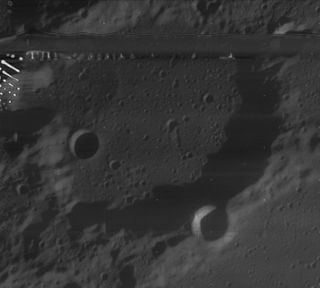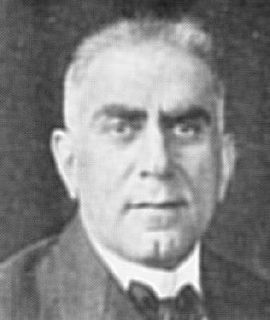This page is based on this
Wikipedia article Text is available under the
CC BY-SA 4.0 license; additional terms may apply.
Images, videos and audio are available under their respective licenses.

In theoretical physics, the anti-de Sitter/conformal field theory correspondence, sometimes called Maldacena duality or gauge/gravity duality, is a conjectured relationship between two kinds of physical theories. On one side are anti-de Sitter spaces (AdS) which are used in theories of quantum gravity, formulated in terms of string theory or M-theory. On the other side of the correspondence are conformal field theories (CFT) which are quantum field theories, including theories similar to the Yang–Mills theories that describe elementary particles.

Hendrik Petrus Berlage was a prominent Dutch architect.

Euctemon is a lunar impact crater that is located in the northern part of the Moon, along the northwest rim of the crater Baillaud. To the southwest of Euctemon is the large walled plain Meton, and to the north-northeast lies the crater De Sitter. Due to its location, Euctemon appears foreshortened when viewed from the Earth.
Deutsch or Deutsche may refer to:
In mathematical physics, de Sitter invariant special relativity is the speculative idea that the fundamental symmetry group of spacetime is the indefinite orthogonal group SO(4,1), that of de Sitter space. In the standard theory of general relativity, de Sitter space is a highly symmetrical special vacuum solution, which requires a cosmological constant or the stress–energy of a constant scalar field to sustain.
Ulbo Garvema is a 1917 Dutch silent film directed by Maurits Binger.

Maurits Binger was a Dutch film director, producer and screenwriter of the silent era. He directed 39 films between 1913 and 1922 and is considered one of the pioneers of fictional films in the Netherlands. Binger's studio and base of operations was in Haarlem, North Holland. Between 1919 and 1923 he was managing director of Anglo-Hollandia an attempt to break into the larger British market. There is a film institute in the Netherlands in his name. He is sometimes referred to as Maurice Binger.

Lola Cornero was a Dutch film actress of the silent era. She appeared in 17 films between 1916 and 1920.
Caille, the French word for quail, may refer to:

The Shipbuilder and his Wife is a 1633 painting by Rembrandt. The sitters were identified in 1970 as Jan Rijcksen (1560/2-1637) and his wife Griet Jans Rijcksen. Rijcksen was a shareholder in the Dutch East India Company, and became its master shipbuilder in 1620. The painting has been in the Royal Collection since 1811.










